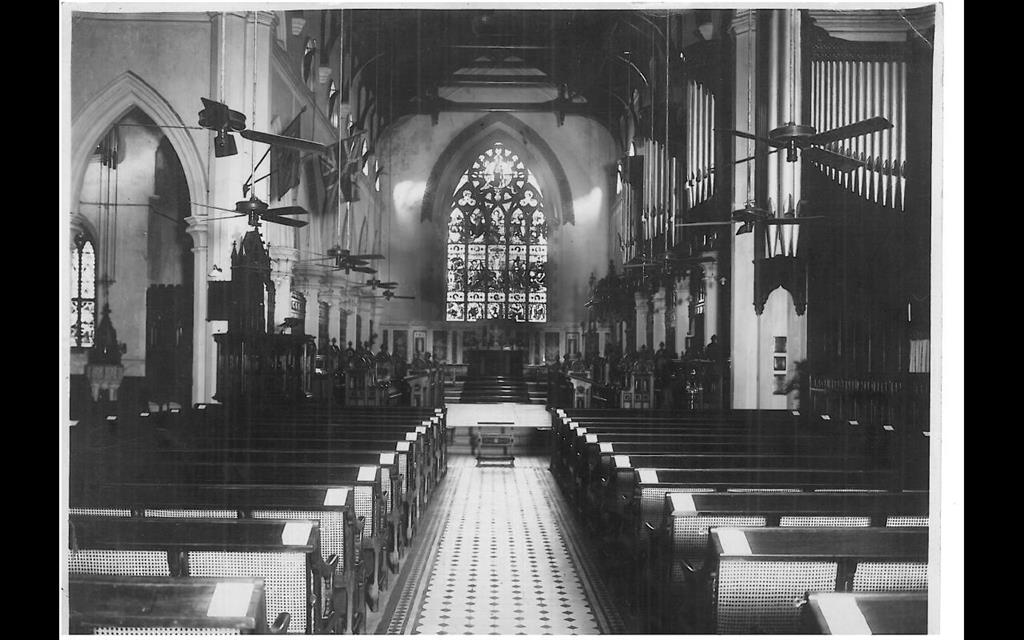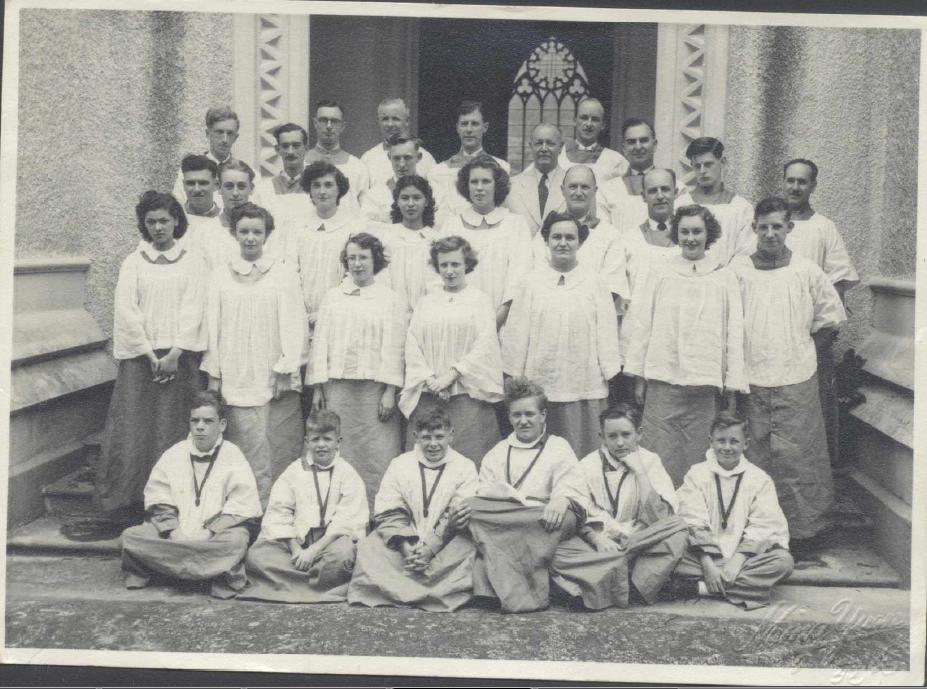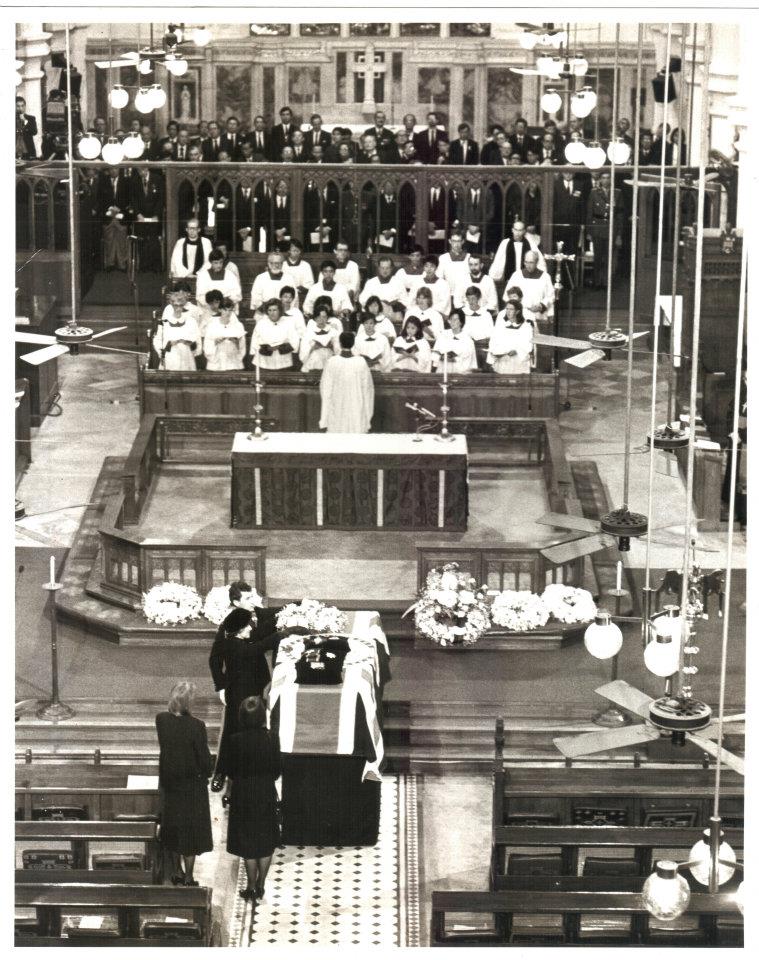
Recent research has shed new light on the early music history of St John’s. A seraphine organ was very likely the first keyboard instrument acquired after the cathedral opened for divine services in 1849. It was subsequently replaced by a harmonium in 1854. Singers were recorded as having received honorariums between 1853 and 1854 but no more were paid later. A platform for the choir was specially built and stationed in the south transept.
In 1858, it was decided a pipe organ would be acquired and shipped from England. The three-manual organ with 25 stops and 1124 pipes, built by Bryceson and Son, finally arrived in December 1860. The Musical Times regarded the organ as ‘decidedly the best on this side of Suez’. However, the unforgiving climate with sudden changes in humidity made the Bryceson organ often unreliable and expensive to repair. It was again replaced in 1887 by a new organ, built by J W Walker and Son, and erected in the current St Michael’s Chapel.
Recommended by Sir Frederick Ouseley, in 1860 Mr Charles Frederick Augustus Sangster became St John’s’ first organist and choirmaster, a post he held for 35 years. Despite difficult dealings with the trustees, a lay body which governed the Cathedral, Mr Sangster managed to raise musical standards both in the cathedral and the colonial establishment. Surviving choir photos and trustees’ minutes show that female singers sang the upper voice parts, even then.
In 1895, Mr Sangster was succeeded by Mr Arthur Gordon Ward, who started the first diocesan choral festival in 1901 with a performance of Holy City by Alfred Robert Gaul. In 1904, Mr Denman Fuller became the third organist and choirmaster. On his recommendation, the Walker organ was entirely overhauled in 1911. An anthem for the opening of theUniversity of Hong Kong was composed by Mr Fuller in the following year, and the 30-strong cathedral choir was invited to perform at the official opening ceremony in March 1912.

In 1923, Mr Frederick Mason succeeded Mr Fuller as the fourth organist and choirmaster. The pipe organ was reconstructed again in 1927 by Blackett & Howden, and enlarged to three manuals with 40 stops. The tradition of the Cathedral Choir singing at the annual Remembrance Day ceremony at Cenotaph was established.
Mr Lindsay Lafford took over from Mr Mason in 1935 and served until 1939. During his office, lady choir members were no longer required to wear hats and were allowed to wear choir robes. The organ was overhauled in 1936 possibly for the last time before the Japanese occupation of Hong Kong. Non congregational choral communion settings by Harold Darke and Charles Villiers Stanford were also introduced.
In 1939, Mr John Reginald Martin Smith succeeded Mr Lafford but was killed in action at the defence battle in Stanley two years later.MissBee Bicheno subsequently took charge in the post war period and the cathedral choir gradually recovered to full strength.
But the old pipe organ was too costly to repair and was dismantled in October 1948. The Cathedral has had electronic organs since. The first was a two manual Compton electronic organ installed in 1949. A 70-stop four-manual digital Allen organ has served since the turn of the new millennium.
In 1949, Mr Donald Fraser became the new organist and choirmaster. He was also the music education advisor to the Hong Kong Government and later founded the Hong Kong Schools Music Competition. The Cathedral Choir was also invited by Sir Robert Ho Tung and the Governor to sing carols annually at their residence.

In 1954, Mrs Cecilia Kwok succeeded Mr Fraser as the Cathedral Organist and Choirmistress. By the 1960s, the cathedral choir had expanded to over 80 members and had to be divided into two choirs. Mrs Kwok stayed on as the Cathedral Organist until 1991 when she was succeeded by Mr Peter Yue, one of her students. She continues to be the Organist Emerita, and a scholarship fund bearing her name was set up in 2009 to help talented young people pursue studies in church music.
In 1979, Mr Raymond Fu took up the post of choirmaster. He was the head of the Music Department at St Paul’s College until 2013, which ensures a steady supply of talented young singers and musicians: most Chinese male choir members either graduated from, or are currently studying at, St Paul’s College. Under Mr Fu's leadership, orchestral settings of the Eucharist have been presented during festive worship services. In 2011, choir stalls were again stationed opposite each other on both sides of the quire, after nearly half a centurydirectly facing the nave following reforms in 1968.

The 40-strong cathedral choir now sings at the 9.00am Eucharist every Sunday, at Choral Mattins once a month and on special occasions such as festivals, weddings and memorial services. It adheres mainly to the standard cathedral repertoire: this comprises the whole gamut, from renaissance music to pieces specially commissioned from contemporary composers. Besides the main cathedral choir, there are six other choirs for services in Mandarin, Pilipino and Cantonese, the Children & Family service, and the monthly Choral Evensong.